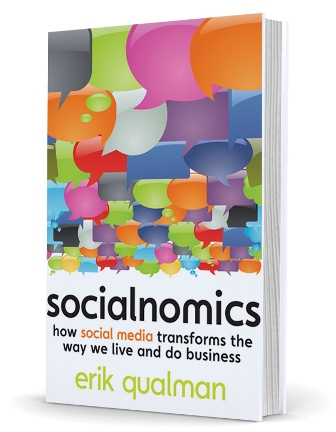Socialnomics and the Business of Social Media
 There are a number of videos and presentations I have seen online and at conferences that hit you with stats about the penetration of Web 2.0 applications and social media.
There are a number of videos and presentations I have seen online and at conferences that hit you with stats about the penetration of Web 2.0 applications and social media.For example, it took radio 38 years to reach 50 millions users - for TV it was only 13 Years - the Internet did it in 4 Years and the iPod only needed 3 Years.
Facebook added double that with 100 million users in less than 9 months, and there were 1 billion iPhone applications in 9 months.
This new book, Socialnomics: How social media transforms the way we live and do business
I took a look at the Socialnomics blog which has plenty of statistics to show that social media is bigger than you think.
You can see why business people are paying attention:
- 25% of search results for the World’s Top 20 largest brands are links to user-generated content
- 34% of bloggers post opinions about products & brands
- 78% of consumers trust peer recommendations while only 14% trust advertisements
- Only 18% of traditional TV campaigns generate a positive ROI
- 90% of people that can skip (as in TiVo) commercials do so
With social media, word of mouth now becomes world of mouth. Your review on a site like Amazon carries weight.
Where does education come in with social media? Beyond the selling of schools (private schools and higher education admissions), how can we use social media most effectively?
Here are a few more choice stats - you can find more in the video at the bottom of this post.
- By 2010 Gen Y will outnumber Baby Boomers….96% of them have joined a social network
- Social Media has overtaken porn as the #1 activity on the Web
- 1 out of 8 couples married in the U.S. last year met via social media
- If Facebook were a country it would be the world’s 4th largest between the United States and Indonesia
- 2009 US Department of Education study revealed that on average,online students out performed those receiving face-to-face instruction
- 1 in 6 higher education students are enrolled in online curriculum
- 80% of companies use LinkedIn as a primary tool to find employees
- Wikipedia has over 13 million articles; some studies show it’s more accurate than Encyclopedia Britannica; 78% of these articles are non-English
- There are over 200,000,000 Blogs and 54% of bloggers post content or tweet daily.
Qualman says in the book/blog that successful companies in social media act more like Dale Carnegie and less like David Ogilvy. That is, they are listening first, and acting like ad agencies and selling second. These successful companies using social media act more like party planners, aggregators, and content providers than traditional advertisers.
Those don't sound like roles most educators or schools would be eager to take on. If socialnomics is a way to use social media to increase sales, cut marketing costs, and communicate directly with consumers, only that last item should have real interest with those of us in the classroom.
Is it all business? Erik Qualman is the Global Vice President of Online Marketing for EF Education who list themselves as "the world’s largest private educator." They offer international language learning courses, tours etc. They are part of the growing number of private education organizations that continue to grow (like University of Phoenix), and that don't seem to frighten higher education as much as you would expect. Did someone say smug?
Maybe this goes back to my earlier posts about redefining universities and using 2.0 to do it. Schools continue to lag behind in finding ways to make use of the new tools, while the business world seems to be far bolder about experimenting.
Comments
No comments